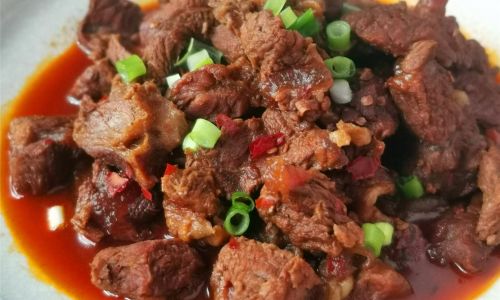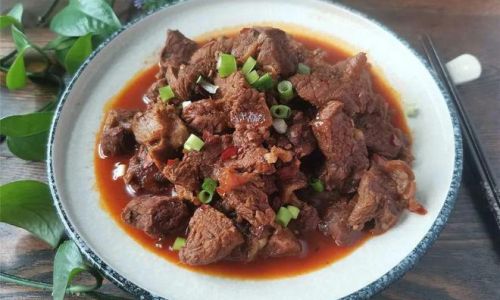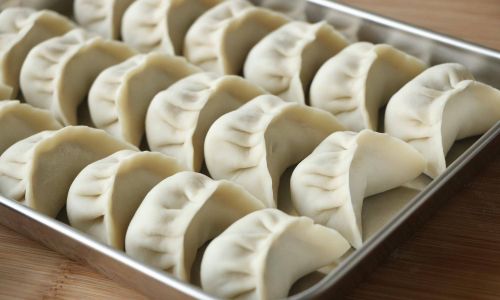Introduction

Beef stew is a timeless culinary delight that warms the soul and satisfies the appetite. Its rich, hearty flavor and tender, fall-apart texture make it a favorite among meat lovers. However, achieving that perfect balance of tenderness and taste can be a challenge, especially for those new to the kitchen. In this comprehensive guide, we’ll delve into the intricacies of how to cook beef stew that is not only tender but also bursting with flavor. From selecting the right cut of beef to mastering the cooking process, we’ll cover every step in detail, ensuring you can create a restaurant-quality beef stew at home.
Chapter 1: Choosing the Right Cut of Beef
The foundation of a great beef stew lies in selecting the appropriate cut of meat. While various cuts can be used, certain ones are inherently better suited for slow, moist cooking methods like stewing. Here are some of the top choices:
-
Chuck Roast: This cut comes from the shoulder area of the cow and is known for its flavorful, well-marbled texture. It’s often labeled as “chuck steak” or “chuck pot roast” in grocery stores.
-
Brisket: Brisket is another excellent choice for stewing, particularly the flat cut. It’s a larger piece of meat with plenty of intramuscular fat, which helps it stay moist and tender during long cooking times.
-
Short Ribs: English or beef short ribs are perfect for stewing due to their high fat content and rich flavor. The bones add extra collagen, which helps to thicken the stew and enhance its body.
-
Blade Roast: Also known as a top blade or 7-bone roast, this cut is taken from the chuck primal and is well-suited for slow cooking due to its marbling and flavor.
When choosing your beef, look for cuts that have a good balance of lean meat and fat. Marbling is crucial for flavor and moisture retention during cooking. Avoid overly lean cuts, as they can become dry and tough when stewed.
Chapter 2: Preparation and Trimming
Once you’ve selected your cut of beef, it’s time to prepare it for stewing. Proper trimming and cutting can significantly impact the final texture and cooking time.
-
Trimming Fat: While some fat is beneficial for flavor and moisture, excess fat can make your stew greasy. Trim off any large pieces of external fat, but leave some marbling intact.
-
Cutting the Meat: For even cooking, cut the beef into uniform pieces, typically around 2 inches in size. This ensures that all pieces will cook through at the same rate.
-
Seasoning: Season your beef generously with salt and pepper. This not only adds flavor but also helps to draw out moisture, which is essential for tenderizing the meat during cooking.
Chapter 3: The Importance of Browning
Before adding your beef to the stewing liquid, it’s crucial to brown it first. This step is often overlooked, but it plays a vital role in developing the stew’s overall flavor.
-
Preheat Your Pan: Use a heavy-bottomed pot or Dutch oven for browning. Preheat it over medium-high heat and add a small amount of oil or fat (such as butter or bacon grease) to prevent sticking.
-
Brown in Batches: Avoid overcrowding the pan, as this will steam the meat rather than brown it. Work in batches if necessary, ensuring each piece has plenty of space to develop a nice, golden-brown crust.
-
Don’t Rush: Browning takes time and patience. Allow each side to develop a deep, caramelized color before flipping. This will create a flavorful fond on the bottom of the pan, which will later be incorporated into the stew.
Chapter 4: Building the Stew Base
The base of your stew is equally important as the meat itself. It provides the backbone of flavor and helps to create a rich, satisfying broth.
-
Vegetables: Start by sautéing aromatic vegetables such as onions, carrots, celery, and garlic in the same pot you used for browning the beef. This helps to build layers of flavor.
-
Tomatoes: Tomatoes add acidity and depth to the stew. You can use canned diced tomatoes, tomato paste, or fresh tomatoes, depending on your preference.

-
Liquid: The liquid in your stew should be flavorful and just enough to cover the meat and vegetables. Options include beef broth, red wine, or a combination of both. Avoid using plain water, as it will lack the necessary flavor.
-
Herbs and Spices: Add a blend of dried herbs and spices such as thyme, rosemary, bay leaves, and peppercorns. These will infuse the stew with a complex, aromatic flavor.
Chapter 5: The Cooking Process
Now that you’ve prepared your ingredients, it’s time to put everything together and let the magic happen.
-
Combining Ingredients: Once your vegetables are soft and fragrant, return the browned beef to the pot. Pour in your chosen liquid, making sure it just covers the meat and vegetables.
-
Bringing to a Simmer: Bring the stew to a gentle simmer over medium-low heat. Avoid boiling, as this can toughen the meat.
-
Covering and Cooking: Cover the pot with a tight-fitting lid and let the stew cook slowly. The low and slow cooking method is crucial for tenderizing the beef. Depending on the cut and size of the pieces, cooking time can range from 2 to 4 hours.
-
Checking and Stirring: Occasionally check the stew, stirring gently to prevent sticking and ensure even cooking. If the liquid reduces too much, add a bit more broth or wine.
Chapter 6: Finishing Touches
The final steps are where you’ll refine your stew’s flavor and texture, ensuring it’s perfect before serving.
-
Taste and Adjust: Once the beef is tender and falling apart, taste the stew and adjust the seasoning as needed. Add more salt, pepper, or herbs if necessary.
-
Thickening: If your stew is too thin, you can thicken it by creating a slurry with cornstarch or flour mixed with a bit of cold water. Stir this mixture into the stew and let it cook for a few minutes until it reaches your desired consistency.
-
Adding Fresh Herbs: For a burst of fresh flavor, stir in some chopped fresh parsley, thyme, or chives just before serving.
Chapter 7: Serving and Enjoying
Your beef stew is now ready to be enjoyed. Here are some tips for serving and storing your stew:
-
Serving Suggestions: Serve your stew over mashed potatoes, rice, or noodles to soak up all the delicious juices. Pair it with a crisp green salad or a loaf of crusty bread for a complete meal.
-
Storing: Leftovers can be stored in an airtight container in the refrigerator for up to 4 days. They can also be frozen for longer storage. To reheat, thaw if frozen and gently warm over low heat, stirring occasionally to prevent sticking.
Conclusion
Mastering the art of tender and delicious beef stew takes time and practice, but with the right techniques and ingredients, you can create a dish that rivals any restaurant’s offering. By selecting the perfect cut of beef, browning it properly, building a flavorful base, and cooking low and slow, you’ll be rewarded with a hearty, satisfying meal that brings people together. So, gather your ingredients, roll up your sleeves, and start stewing. Your taste buds will thank you!
Remember, cooking is an art form, and every kitchen has its own unique flavor. Feel free to experiment with different cuts of beef, spices, and vegetables to find the combination that suits your taste buds best. Happy stewing!






0 comments